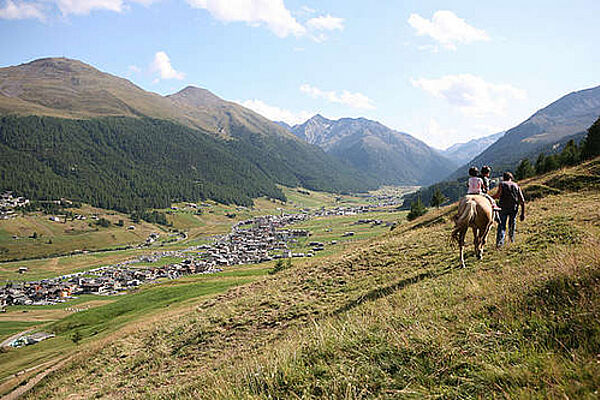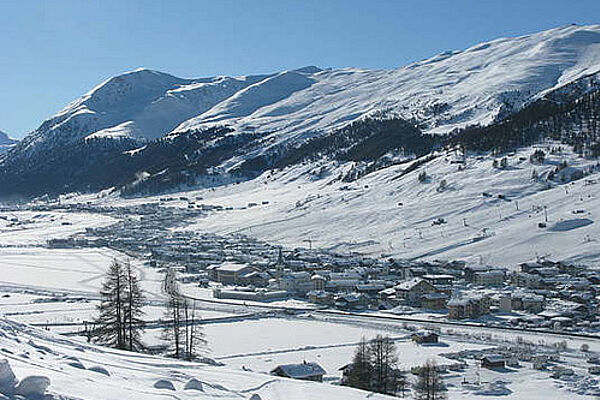Town of Livigno
Livigno is located at 1,816 meters in the middle of the Alps on the border with Switzerland and is a duty free zone. Nearly 6,000 people live in the 221 square km municipality bordered to the north by Lago di Livigno, a reservoir, and surrounded by over 3, 000 meter high mountain peaks. The feratel webcam provides a beautiful panoramic view of the ski resort of Livigno.
What’s happening in Livigno?
Livigno lives up to its reputation as a top winter sports destination. Whether on skis, snowboard or telemark skis, there are runs for every level and taste on the 115 km of slopes. The ski area is suitable both for beginners and for demanding winter athletes. Freestylers can let off steam in the snow park, in the half pipe or on the boardercross slopes; telemarkers get their money’s worth in the annual “Skieda” at the end of the season. You can see which ski lifts and runs are currently open on the feratel webcam. Livigno offers cross-country skiers 40 km of groomed trails for every style and an international cross-country marathon, the Ski Sgambeda every year. Away from the slopes of Livigno, it is a paradise for ice climbers, winter hikers and ski tourers.
The mountain scenery surrounding Livigno is a special attraction also in the summer. Motorcyclists and road bikers can discover the most famous passes in the Alps here – Livigno is an ideal starting point for day trips to the Stilfserjoch, Flüela, Julier and Bernina passes. Livigno also has great trails and high mountain paths for mountain bikers. Those who don’t want to sweat too much can rent an electric mountain bike locally. The environment is also pleasant to explore and enjoy “on foot” with an extended hike.
Sightseeing
With its scenic attractions, Livigno has much more to offer than just something for athletes. Landscape art is important here. Along the Pietrarte you will find numerous sculptures and installations made from stone, hay and other natural materials, which change over time and thus always have a new shape. In winter, when these installations are partly snowed in, artists use the snow to create “art in ice”.








